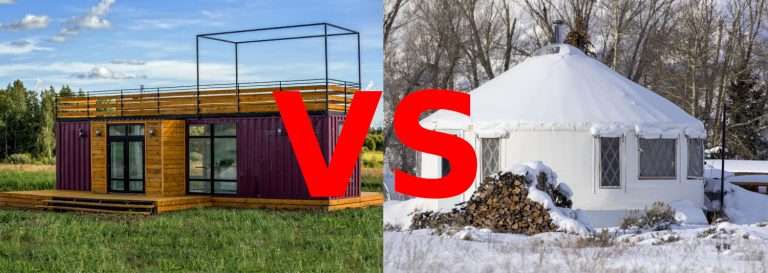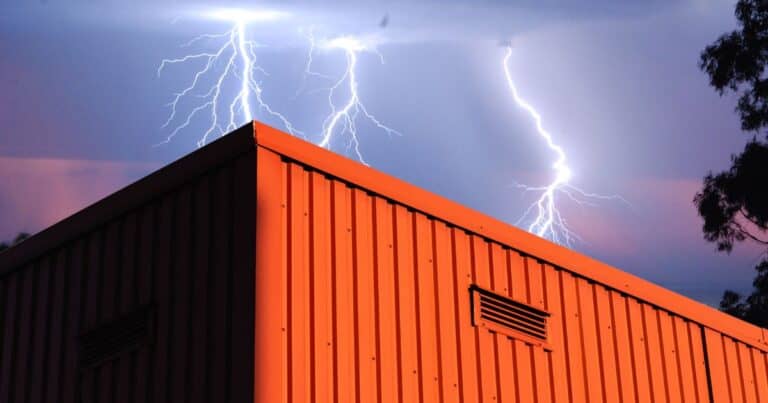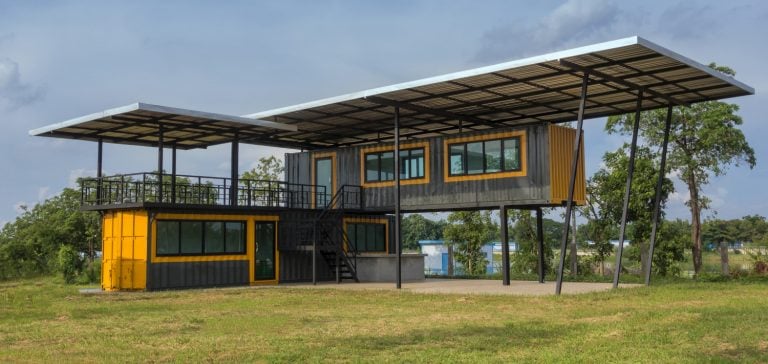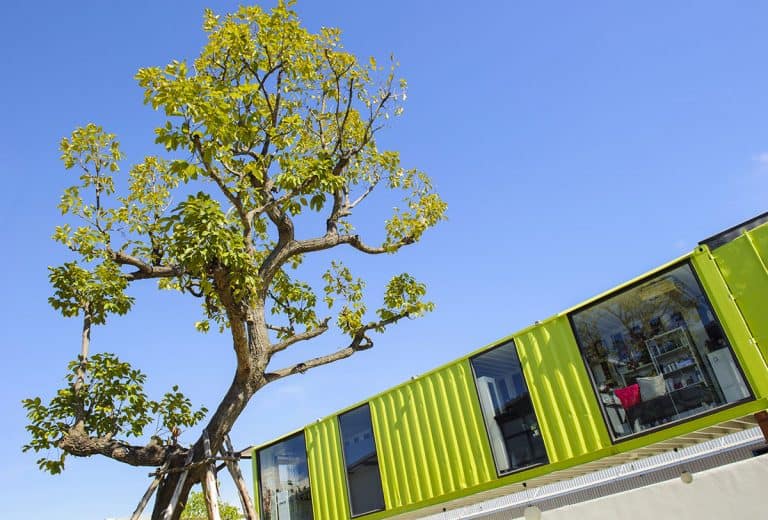What Is the Right Size Shipping Container for Home Building?
Container homes offer many advantages, one being that they are relatively easy to build and can be very affordable if done right. There is a surprisingly wide selection of shipping containers in multiple shapes and sizes, hence the often-asked question of what size container to use.
The best container sizes for building container houses are high cube 20 and 40-foot containers. These models provide a comfortable and legal ceiling height as well as space for insulation. If you do not mind a somewhat lower ceiling, standard 20 and 40-foot containers are cheaper and just as useful.
What Is a High Cube Container?
A high cube is a container type that is slightly taller than the standard models. While the standard height is 7 foot 4 1/16 inches tall, a high cube is 7 foot 6 inches. That offers an additional 13 inches of height.
High cubes are generally a better option for home building than ordinary standard containers as they offer more headroom. Most modern homes have 8 to 9 feet ceilings, meaning that even a high cube container house has relatively low ceilings.
Can You Build a Home With a Standard Container?
You certainly can, but be aware of their height limitations. One factor is your personal preference; if you don’t mind a lower ceiling height, this may not bother you personally, but you should also consider the potential legal implications.
According to the International Residential Code (IRC) section R305, “Habitable space, hallways and portions of basements containing these spaces shall have a ceiling height of not less than 7 feet” while “Bathrooms, toilet rooms and laundry rooms shall have a ceiling height of not less than 6 feet 8 inches“. If this section is implemented into your local building code, it could be a challenge to getting approval for a container home with less than 7 feet to the ceiling.
Why does this matter when standard containers are 7 foot 4 1/16 inches? Because you will probably want to insulate your home, thereby potentially lowering the ceiling further. This may not be the case if you add a sloped roof and place the insulation on top of the container. Still, it’s important to consider the question of insulation before deciding on the preferred container size.
Another factor is the resale value: while you might be fine with a relatively low ceiling, it could put off potential future buyers. Tall people may feel cramped if there are only a few inches between them and the ceiling, and any potential buyer will take that into consideration when looking for a home. Many nice old farmhouses are much harder to sell due to low ceilings, and they often require creative solutions that are not possible to do in a container house.
In short, standard shipping containers can be used for container homes, but make sure you have considered the legal and practical implications of building a house with a low ceiling.
High Cube vs. Standard Container Price
If your primary reason to get standard containers is the lower cost, it may not be worth the savings.
A standard one-trip 40-foot shipping container costs about $4,100. A one-trip 40-foot high cube container costs about $4,900. When building a container home, expect to pay around 20% more for high cube containers compared to standard containers.
Is this a significant difference? If you need 6 containers for your home, that results in a price difference of approximately $4,900. Whether that is worth it relative to the potential practical challenges mentioned above is up to you.
20 or 40 Foot Containers?
20 and 40-foot containers are both equally useful for home building unless your design dimensions require one type over the other. Both sizes are often used in combination, depending on your needs.
The 40-footers will offer more interior space, while the shorter version provides more design flexibility. One benefit of the 40-foot containers is their price. It does not cost much more to build a large container, meaning you will pay a lot more for two small compared to one large container. A typical one-trip 20-footer will cost around $3,100 compared to the previously mentioned 4,100 for a 40-footer in the same condition.
In short, unless you need the shorter versions for practical reasons, look for 40-foot containers. Those are also typically more widely available as high cubes.
Other Sizes
10-foot containers
These tony models are much more expensive per foot compared to larger containers. While the materials going into a 10-footer is half that of a 20-foot container, all the other production expenses (labor, time, machinery, etc.) are about the same.
High cube versions do exist, but due to their price, there are very few reasons to build houses out of 10-footers. Although their 80 square food floor space makes them useful if you are looking for a shed that takes virtually no time to set up.
45, 48, and 53-foot Containers
These large container models are harder to find, and they only come as high cube versions. If you can find some, you may be able to make a good deal while also getting more floor space. But make sure to use sufficient bracing when you cut out the side walls as these containers are at higher risk of bending due to their length.
Open Top Containers
Open-top containers are like standard containers, except they do not have a roof. They typically come in 20 and 40-foot versions.
If you want a very high ceiling, you can buy an open-top container, place a standard container on top of it, and cut off its base. That will provide about 15 feet of ceiling height and make your home feel much more open than the more common 7 feet container house ceiling height.
Of course, you can also just use a standard container and remove the top, but you will save some time by using open-top containers in addition to saving some money if you are able to get them at a discount.






